By Cindy Gough
My passion for this ministry started years ago. As a single mom for many years, I struggled with schedules, job, finances, family time and any type of “me” time that I could squeeze in. I always felt blessed to be where I was at that exact moment, but always in the back of my mind, I wanted to do more, provide more and be proud of my accomplishments. As important, I wanted to make my kids proud of their mom!
I see those same struggles with the women that come to Christian Women’s Job Corps. I see different backgrounds, different lost opportunities, different sacrifices made over the years and lots of hope in their hearts for a CHANGE!
All women, no matter what their age or situation, want to be proud of who they are and want to have self-esteem and confidence. So many of our women in this ministry are strong and brave and have already achieved so much. I got involved with CWJC Waco to provide that “helping hand” that we’ve all needed at some point in our lives. If we can help change a woman’s education, give her some courage and strength, skills to reach a level perhaps she never dreamed of, and bring her closer to God and renew her faith, then we have done our job at CWJC.
All of this is offered to our women free of charge. We provide that helping hand, a teacher, a volunteer, an education, computer training, a variety of curriculum, a relationship with Jesus Christ, and all at no cost to them. This is only made possible through our generous donors and those that have worked tirelessly over the years. Like every non-profit, we must have fundraisers and monthly donations to keep this ministry viable for the women in our community. Please join us in this campaign and see what you feel you can do financially to help women in their quest to be stronger, gain power in themselves and their families and see a renewed spirit in each of them.
Supporting CWJC Waco brings change to lives across McLennan County. Join our mission by exploring ways to give at www.wacobaskets.com or contact us at 254-757-0416 for more information.
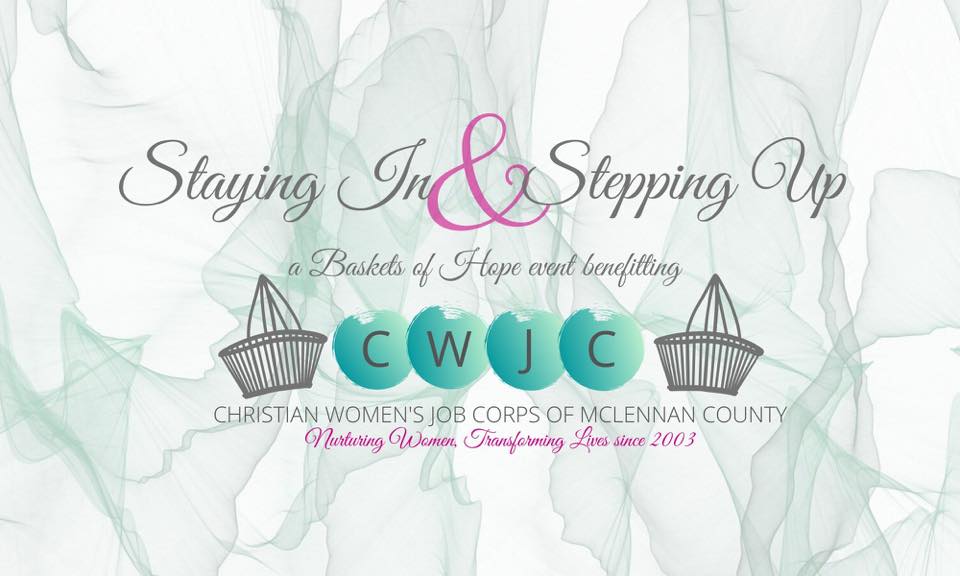
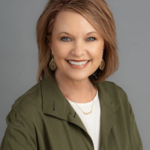
Cindy Gough is a Realtor with Camille Johnson, Realtors here in Waco, Texas. Cindy loves her business and helping clients as well as helping others in her community. She spends many hours serving her community and is involved in her church at Highland Baptist in Waco. Cindy has served on multiple Boards in different agencies across the Waco area. Cindy is a big Baylor Bear fan and loves spending her time off with her family and her 5 grandkids!
The Act Locally Waco blog publishes posts with a connection to these aspirations for Waco. If you are interested in writing for the Act Locally Waco Blog, please email [email protected] for more information.
By Jillian Jones
Communities In Schools of the Heart of Texas (CISHOT) has been known for over 30 years for providing wraparound services to thousands of students and families in the many school districts across our Heart of Texas region. However, many people may not know that Communities In Schools serves youth beyond their school years and into adulthood as well. The Workforce Development Program at CISHOT provides case management, career advancement services, and real-life work experience to young adults to help them work towards post-secondary education and careers that provide stability and opportunity.
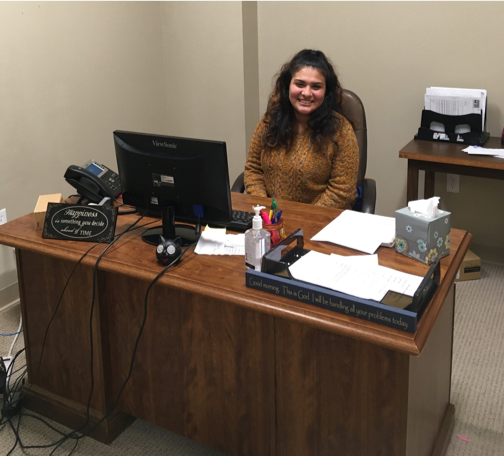
One of the more tangible ways young adults break into the job market is through internships. Internships provide the participant with valuable insight into a career field they may be interested in, as well as access to mentorship and guidance from more experienced workers. Employers can also use internships as vital training time that is needed before an intern can receive a full-time job offer.
While internships have tangible benefits for both the participant and the employer, we understand internships can be costly for an employer and unpaid internships are not as attractive to young people or as common as they used to be.
This is where the Workforce Development Program at Communities In Schools of the Heart of Texas plays a role. With funding and support from the Heart of Texas Workforce Development Board, Communities In Schools is able to provide internships on a year-round, rolling basis at dozens of local businesses across all sectors and industries. These short-term internships are completely free for an employer who volunteers to host an interested participant, as CISHOT acts as the employer of record and covers all wages paid to the intern for the duration of the internship.
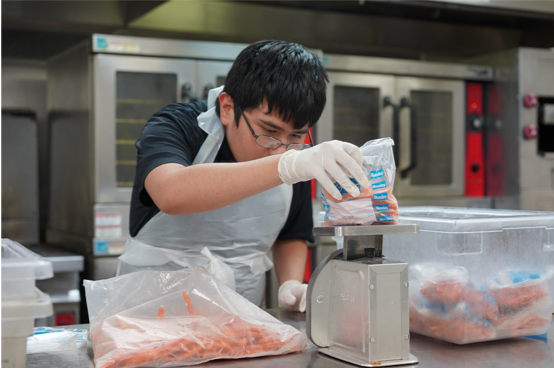
The job market is changing rapidly as we navigate through the pandemic. While some employers are downsizing or shifting to permanent virtual work, others may be having trouble finding enough qualified applicants to return to normal operations. If you’re an employer who is looking to hire or fill open positions amidst the uncertainty, please consider hosting an intern (or two!) through the Workforce Development Program at CISHOT. All interns participate in a four-hour New Hire Training course covering workplace basics and safety guidelines recommended by the Centers for Disease Control and Prevention.
Our 2020 Fall cohort will start on October 12 and will work through December 11. We are looking to expand our employer base and would love to work with YOU on a partnership that can benefit young adults in our community and help your business grow through this season of change!

Jillian Jones is the Director of the Workforce Development Program at Communities In Schools of the Heart of Texas. Jillian is a Waco native and a graduate of Baylor University and the University of North Carolina. She enjoys reading, cooking, spending time with family, doing anything outdoors, and worrisome amounts of online shopping. She has a husband, Jenner, and a dog, Buddy.
The Act Locally Waco blog publishes posts with a connection to these aspirations for Waco. If you are interested in writing for the Act Locally Waco Blog, please email [email protected]for more information.
Press release, City of Waco. Additional Notes, Ashley Bean Thornton
The City of Waco is holding a Virtual Ribbon Cutting to mark the completion of the renovation of the Greenwood Cemetery. The edited virtual ribbon cutting celebration ceremony will air on WCCC-TV (available on Spectrum and Grande cable channel 10 and on the web at www.wccc.tv) at 10 a.m. on Tuesday, September 15.
Greenwood Cemetery is Waco’s second oldest cemetery, dating back to 1875. While Greenwood is the final resting place for many of Waco’s famous and widely celebrated citizens, it has struggled with the legacy of a segregated past.
The $435,000 improvement project was a collaborative effort to remove the boundaries that separated the “White section” from the “Black section” and place the entire cemetery within the City of Waco’s care. Working together were families, citizens and former cemetery association members along with the Texas Historical Commission, Texas Department of Transportation, People’s Cemetery Association, McLennan County, Methodist Children’s Home and the City of Waco.
Here are some brief notes about just a few of the notable people who are buried at Greenwood.
Robert Bevis (1889 – 1972)
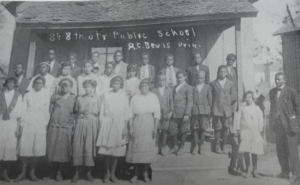
Robert Bevis was born in Austin. He attended Tillotson College there. He later received a Master of Arts from Denver University in Colorado. He organized South Waco Colored Elementary School (later named Oakwood School) in 1914. He was the first principal and served in that role for for 44 years (1914 – 1959), minus one year for serving in WWI. In November of 1915 South Waco Colored School moved into the first brick school for Negroes to be erected in Waco.
Jules Bledsoe (1899 – 1943)

Even as a young child, Jules Bledose loved to sing. He gave his first performance, age five, at New Hope Baptist Church. In 1918 he Graduated Magna Cum Laude from Bishop College. In 1920 he began studying medicine at Columbia University. After taking voice lessons, career plans shifted. In 1924 he made his professional music debut at the Aeolian Hall in mid-town Manhattan. In 1927 his portrayal of Joe in Jerome Kern’s Showboat launched him into the spotlight. His version of “Ol’ Man River” became a classic. Known internationally, he performed across the United States and in Europe. Despite racial discrimination his immense talent and skill earned him the right to perform with BBC Symphony in London, the Royal-Dutch Italian Opera Company, and the Cosmopolitan Opera Association in New York. He was also a composer. He composed several songs and an opera titled “Bondage” based upon Harriet Beecher Stowe’s novel Uncle Tom’s Cabin.
Andrew “Lefty” Cooper (1896 – 1941)
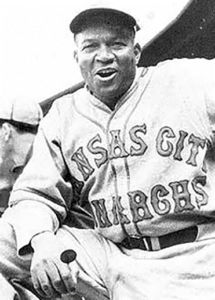
Born in Waco in 1896/1898, Andrew Cooper attended A. J. Moore High School and Paul Quinn College. Prior to the 1940s, Black people could not play baseball in the American Major Leagues. Cooper had successful careers in both the The Negro National League, and the Negro American League. He played for both Detroit and Kansas City. Cooper was known as one of the best pitchers in baseball. He became player/manager of the Monarchs in 1937. By 1940 he had led Kansas City to three championships. Cooper died in 1941 only a few years before Jackie Robinson integrated the major leagues 1946. In 2006 Andrew Cooper was inducted into the Baseball Hall of Fame.
Estella Maxey – (1904-1948)
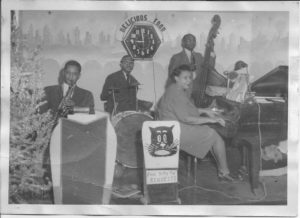
Estella Maxey was an orphan. She was adopted by Gussie Moore and raised on South Second Street near Baylor. Even as a child she was fascinated with music and would slip away to pick out tunes on the piano. She had perfect pitch. During the depression she organized an orchestra to accompany her on the piano and began to play and sing to make a living. Gradually she began playing dance music. Soon she was “all the rage” playing at private parties for all the rich people in town. A generation of young people in Waco learned to dance to the sound of Stella singing “My Blue Heaven,” “Lover, Come back to Me,” “You’re my Everything” and other hits of the time. When she died in 1948, the Waco Tribune-Herald ran her obituary on the front page.
Dr. Vivienne Malone-Mayes (1932 – 1995)
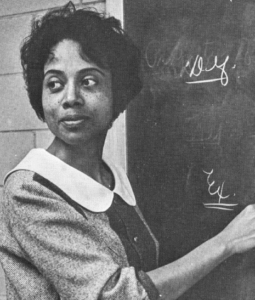
Vivienne Lucille Malone grew up in Waco and graduated at age 16 from A.J. Moore High School, not far from the Baylor campus. She earned bachelor’s and master’s degrees in mathematics from Fisk University. She chaired the math departments at Bishop College in Dallas and then Paul Quinn College, which was in Waco at the time. Because she wanted to take more graduate-level classes courses, she applied to Baylor in 1961, but she was rejected because of her race. In 1962 she enrolled at the University of Texas at Austin, which had been required by federal law to integrate. She persevered to become the second African-American and the first black female to earn a PhD in mathematics from the University of Texas. After earning her PhD, she returned to Waco where she was eventually hired as the first African-American faculty member at Baylor University in 1966. By 1971, Baylor Student Congress named her as an Outstanding Faculty Member of the Year.
(City council, school board, planning commission, county commissioners – these groups and several others represent us. They do the day to day work of running our community. It is our responsibility to keep informed about their work so that we can help them represent us effectively. “Civic Insights” by Jeffrey Vitarius is a regular feature of Act Locally Waco. Its purpose is to help us understand decisions that shape our community so that we can participate effectively as informed, engaged residents of Waco. – ALW)

By Jeffrey Vitarius
What is a fair way to pay for the infrastructure improvements required for new developments? That is the question at the heart of a policy the city has been considering since January 2019: impact fees.
In 2016, the City adopted a comprehensive twenty-five year plan that noted that “the question is not whether Waco will grow, but what form will this growth take. It is important that Waco grow in a manner that is economically, environmentally, and culturally sustainable.” One of the critical challenges this plan identified was that of “increasingly dispersed development,” development occurring farther and farther away from the city’s core.
Why would this be a challenge? Let’s start with the basics. Imagine a set of new homes on a few acres of land that used to be a farm. This new development will need a few things to thrive, for example, roads to connect it to the rest of the city, and pipes to carry water in and wastewater (also known as sewage) out.
Even if there are already roads and pipes in the area, it may not just be a matter of connecting the new development to the existing network. Our new batch of homes will mean increased volume of cars, water, and wastewater in that part of the city. The roads and pipes around the development may need to be upgraded to handle the increased volume. We call these kinds of projects – to construct new roads and pipes or upgrade existing roads and pipes for more volume – “infrastructure improvements.” There are plenty of other kinds of infrastructure improvements, but for the purpose of discussing impact fees, we will focus on these.
It is one of the city’s jobs to construct these pipes and roads. The challenge comes in how to pay for these projects. The city already has a substantial inventory of roads and pipes that it needs to monitor, repair, and eventually replace.
How can the city pay for all of its current obligations much less the additional demands from new development? As the twenty-five year plan identifies “given the limited capacity and deteriorated condition of existing infrastructure, the City cannot afford to provide subsidies to encourage development at suburban densities in rural areas.” In plain English that means: our new set of suburban houses on what used to be farmland creates a financial difficulty for the city. Enter the impact fee.
The concept of the impact fee is fairly straightforward though it can get complicated in implementation and practice. The twenty-five year plan explains that impact fees serve as “a means of ensuring new development pays an equitable share of the costs associated with the construction and expansion of public infrastructure needed to service new development…Impact fees shift some of the cost of financing public facilities [roads and pipes] from the general taxpayer to the direct beneficiaries of these facilities [roads and pipes].”
In other words, impact fees move the cost of improvement from the city generally (where it is paid by existing taxpayers) to the developments that are more directly served by those improvements. If we think back to our former farm, theoretically impact fees would require that the developer pay part of the cost of the roads and pipes. The use of the phrase “equitable share” in the quote above hints at the large complicated question around this simple policy idea. At what amount is an impact fee fair?
Within that question are two considerations, the first is a matter of analysis and the second is a matter of policy. First the city has to determine how much impact fees could be to cover the cost of anticipated development. Then the much more difficult question of how much the impact fees should be can be addressed. In Waco we are in the transition from the could part of this process to the should part of this process.
In July of 2019, the city formed the Capital Improvement Advisory Committee to review the impact fee question (among other things) and make recommendations to the City Council on how to best proceed with this policy. That committee met this week to discuss the conclusion of the could part of the process (maximum fee calculations) and the start of the should part of that process (policy considerations).
Like many of the topics we take a look at in Civic Insights, this one is complicated and will take a few posts to get through. It looks like the City Council will be holding a public hearing on this question on October 6th. I will aim to get us caught up with the could part of the process by then.
Meeting notes:
- Waco Capital Improvements Advisory Committee met on 09/09/20 – For the full agenda click here

Jeffrey Vitarius has been actively local since early 2017. He lives in Sanger Heights with partner (JD) and his son (Callahan). He helped found Waco Pride Network and now serves as that organization’s treasurer and Pride Planning Chair. Jeffrey works at City Center Waco where he helps keep Downtown Waco clean, safe, and vibrant. He is a member of St. Alban’s Episcopal Church and graduated from Baylor in 2011.
The Act Locally Waco blog publishes posts with a connection to these aspirations for Waco. If you are interested in writing for the Act Locally Waco Blog, please email [email protected]for more information.
By Keshia Miller
Beginning September 22nd, WIBO Waco will launch their 5th year of workshops teaching new and existing entrepreneurs how to build profitable, successful businesses.
Many people struggle with starting or growing a business. This entrepreneurial workshop helps individuals overcome various obstacles and guides them to a successful path in starting or growing a business.

Nationally, “Workshop in Business Opportunities” also referred to as WIBO, was started in 1966 by Walter Geier and Mal Woolfolk to enable small business owners and budding entrepreneurs from underserved communities to obtain financial success by starting, operating, and building successful businesses that develop economic power, provide jobs and improve communities. Since the 1st workshop, WIBO has graduated more than 18,000 entrepreneurs, where 75% of WIBO grad’s businesses were up and running within a year of taking the program, and 42% of companies saw an increase in revenue after taking the WIBO program.
The workshop is a success in Waco. “Fluff Wash & Fold is off to a great start due to Workshop in Business Opportunities!” say co-owners Stephanie & Lana. “WIBO taught us to develop our pitch, so that when an opportunity happens, we can be ready to spread the word about our service at a moment’s notice. There was so much more that we’ve taken away and developed on our own with the support of our WIBO community!”
The upcoming workshop will be taught online due to COVID-19. This makes it even more readily available to entrepreneurs in the area.
Some of the business building topics that entrepreneurs will experience during this 16-week course include how to conduct market research to identify your ideal customers, promoting your business, making a profit, creating your pricing strategy, and other actionable and detailed steps that are excellent for a new or budding business.
There is a cost associated with the workshops. However, WIBO offers scholarships to people who are earning less than $40,000, veterans, and individuals who have been recently incarcerated.
For more information, visit wibowaco.org. Join us for a ZOOM info session on Thu Sep 10, 2020 7pm – 8pm (CDT). Click here to register.
Registration is open now for the workshop. Register online at https://www.wibowaco.org to register or by calling (254.292.2423).
Space is limited for the workshops. If you’ve found your life’s passion and want to create a thriving business doing what you love, then the WIBO 10-week workshop is for you. Be sure to act fast.

Rocky and Keshia Miller are the owners of Prosperity Tax Service and Prosperity Travel Group The Cruise Specialists are just two of their roles. They also founded East Waco Empowerment Project and put on the annual Feast in The East which provides a hot holiday meal and warm clothing for neighbors in Waco. They also organize the Workshop in Business Opportunities (WIBO). Rocky and Keshia have four children: Kameren, Rashaad, ReElle & Xjiani. They also have three grandchildren: Ava, Mattix & McKinley
The Act Locally Waco blog publishes posts with a connection to these aspirations for Waco. If you are interested in writing for the Act Locally Waco Blog, please email [email protected] for more information.
Press Release – In partnership with national nonprofit organization the Cities for Financial Empowerment Fund (CFE Fund), the City of Waco has announced the launch of a free Financial Navigators program to help residents navigate financial issues related to the COVID-19 pandemic in conjunction with community partners: Heart of Texas Goodwill Industries, the Cen-Tex Hispanic Chamber of Commerce and Grassroots Community Development.
Financial Navigators will be available beginning August 24th to provide guidance over the phone to help residents access available programs and services to manage income disruptions and other financial concerns they may be experiencing at no cost. With one-on-one discussions, they will help to address personal financial issues, identify immediate steps to manage expenses and maximize income, and make referrals to other services such as bill paying assistance, receiving government services and finding food and childcare assistance. The City of Waco will offer these Financial Navigator services in partnership with Prosper Waco.
Council Member John Kinnaird explains, “We know that our citizens are struggling, and in this environment where stress is high and keeping track of all available resources is difficult at best, being able to provide a comprehensive and helpful resource like the Financial Navigators is invaluable. Being able to get those in our community to the help and resources they need in an effective and timely manner is critical to the overall health and well-being of our residents, and this program will greatly help us achieve that goal.”
To access services, residents can visit: finnav.org/interest-waco and fill out a short form, or they can call (254) 753-7337 to sign up. They will then be contacted to begin their personal session. Organizations across Waco can also refer clients directly to a financial navigator. *Information will also be available at covidwaco.com under Community Resources.
The Financial Navigators program is funded in partnership with the CFE Fund, who provided grant funding along with significant technical assistance and training to launch the program. This initiative is supported by Bloomberg Philanthropies, the CitiFoundation, JPMorgan Chase & Co., and the Wells Fargo Foundation.
“Financial distress is a primary part of the COVID-19 crisis, and we’re pleased the Waco City Council has made this a priority for their residents,” said Jonathan Mintz, President and CEO of the Cities for Financial Empowerment Fund. “The Financial Navigators program will help Waco residents assess and prioritize their financial concerns and get connected with the correct resources.”
“Communities across the country continue to face significant economic challenges as a result of COVID-19,” said Brandee McHale, Head of Citi Community Investing and Development and President of the Citi Foundation. “To provide residents in the City of Waco with the vital financial tools and support necessary to navigate the financial impacts of the pandemic, the Citi Foundation is proud to partner once again with the Cities for Financial Empowerment Fund to launch the Financial Navigators program.”
“The pandemic has clearly heightened awareness around the financial hardships that so many people were already facing here in Waco and deep disparities that exist in society,” said Darlene Goins, head of financial health philanthropy with the Wells Fargo Foundation. “We applaud the CFE Fund for bringing together the City of Waco, philanthropists, and financial services and other industries to reimagine solutions that can help improve financial stability and resiliency for individuals and families, particularly during this economic crisis.”
By Sara Aguirre
This is part 2 of a 4-part series on The Christian Women’s Job Corps of McLennan County. For all of the posts in this series, click here: CWJC. – ALW
Christian Women’s Job Corps is life changing. The women we serve are some of the strongest women I know. Their perseverance to overcome life’s challenges takes courage and bravery, and the women we serve have what it takes to conquer and thrive. My favorite part of my job is listening to the women share their hopes and dreams and helping them create goals to move towards their dreams. CWJC provides free programs, GED and Career Track, for women in McLennan County.
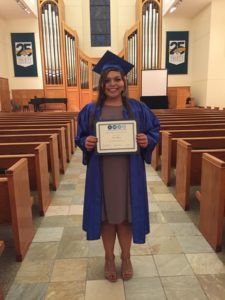
Our GED program provides hope for so many women who haven’t had the opportunity to complete high school. CWJC provides all the materials needed, covers the cost of practice test and GED official test, tutoring, and case management. Career Track offers skills that are holistic to help women prepare for their career. Career Track offers Bible Study, Boundaries, Job readiness (resume writing, mock interviews, and job retention), computer skills, personal development, money management, guest speaker workshops, and mentoring.
Poverty, past mistakes, and failures don’t have to control your life – you can choose to take the steps to a brighter future. I’m actually an alumna of the Career Track program at CWJC. I came into CWJC without a job, phone, car, and living in a long-term recovery home due to my brokenness and choices I had made. CWJC helped me gain the confidence I needed to pursue the dreams God has put into my heart. Shortly after completing the program I went to pursue my dream, earning my degree in social work, now I’m able to give back what I have received. Never give up on the dreams God has put in your heart because with God all things are possible.
None of the work CWJC Waco does would be possible without the support of our donors and community. The transforming work done at CWJC leads to women giving back to their community. Supporting CWJC Waco brings empowerment to women across McLennan County. Join our mission by exploring ways to give at www.wacobaskets.com or contact us at 254-757-0416 for more information.

Sara Aguirre is a CWJC Alumni from Waco, TX. After her time with CWJC, Sara graduated with her undergrad in social work from Tarleton State University and is currently working towards her master’s degree in clinical social work. Sara has served the Waco community since 2006 in various roles and capacities. She has worked with families in the foster care system through the Department of Family Protective Services. Sara is an active member of Antioch Community Church where she has served in the youth ministry, overseas missions, and guest services. Sara is passionate about working with individuals who have experienced trauma and who want to be equipped, empowered, and transformed by the healing power of Jesus. Sara enjoys going to ball games, traveling, learning, and having meaningful conversations over a cup of coffee!
The Act Locally Waco blog publishes posts with a connection to these aspirations for Waco. If you are interested in writing for the Act Locally Waco Blog, please email [email protected] for more information.
By Ferrell Foster
Five Waco civic, health, and school leaders Wednesday encouraged the people of Greater Waco to think of their neighbors and to be careful how they are involved in gatherings and celebrate the Labor Day weekend. They also stressed the importance of getting a flu shot.
With the holiday coming and football season upon us, Mayor Kyle Deaver asked residents to do these activities “smartly and safely” so the community can remain open. “Take care of yourself and take care of each other.” He made the comments during the weekly City of Waco News Conference related to the COVID-19 pandemic.
Jerry Maze, executive director for Education Service Center Region 12, noted, “What happens in the community shows up in the schools,” and that can be both good and bad. “If everyone works together and makes good decisions, we get better outcomes.”
Dr. Brian Becker, of Ascension Providence Hospital, called special attention to the holiday weekend, noting that following standard safety procedures is important for our public health and to our neighbors.
Dr. Marc Elieson, of Baylor Scott & White-HIllcrest, also spoke to the importance of wearing face masks, distancing, and proper hand hygiene. ”Be wise,” he said.
A number of questions were asked about schools and Baylor. For students, “it’s so much more about what’s happening off campus,” Mayor Deaver said. “We know this is hard; it’s trying for everyone, … but it’s the way we keep schools open and having football” and other activities.
Dr. Jackson Griggs, of the Family Health Center, praised the efforts of Baylor University to test and then isolate students exposed to COVID-19. “I’m impressed with efforts by Baylor to mitigate the risk.”
Current hospitalizations are down some, but the hospital representatives said their in-patient numbers usually lag behind case counts by about a week. And case counts have been rising in McLennan County.
The current “Effective Reproduction Rate” for McLennan County is 1.07, Mayor Deaver said. Anything above 1 means the disease is expanding, not contracting. The Rt is a measure of contagiousness or how many people one COVID-19 person infects.
In his closing remarks, Dr. Griggs highlighted the importance of bringing down the positivity rate. In recent weeks that rate has hovered just under 15% in McLennan County, which is above the state rate. More testing helps identify people with COVID-19 and also lowers the positivity rate. “Anyone with subtle symptoms needs to come in and be tested,” Dr. Griggs said. The first step is to contact your primary care physician.
The head of Family Health Center also emphasized the importance of flu vaccinations. “We need to keep flu rates down this season,” Dr. Griggs said. There’s a lot we don’t know about flu and COVID-19 infections in the same person. “Flu vaccines are imperative.”
It is especially important to promote the flu vaccines in “communities of color” because they have been particularly hard hit by COVID-19 and have “historically lower vaccination rates.”
The news conference is aired at 1:30 p.m. each Wednesday at WCCC-TV for the public to view.

Ferrell Foster is senior content specialist for care and communication for Prosper Waco. He also serves on the Act Locally Waco Board of Directors and helps the website with blog posts related to health, education, financial security, and equity.
By Ashley Bean Thornton
Welcome aboard, Susanne Wilson!
Susanne Wilson was born and raised in Argentina, lived a few years in Europe, but graduated from high school in Sugarland, Texas, and then went on to graduate from the University of Texas at Austin. She claims to be a “Longhorn through and through.” In addition to being a Longhorn, she is now also the new Director of the EOAC Head Start program that serves Waco, as well as locations throughout McLennan and Falls Counties. She took over the role from long-time Director Debora Jones who retired earlier this year.
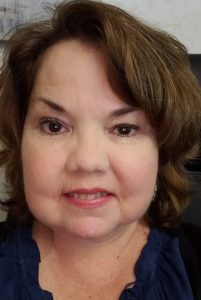
Wilson found her passion for working with children and families while doing her student teaching as an education student at UT. Wilson feels fortunate that after college she found work at one of the largest non-profits in the state, Neighborhood Centers Inc. in Houston (now known as Baker-Ripley). That is where she got her first job with Head Start, and she has been with Head Start ever since.
After Houston, Wilson spent a few years up north as director of a program in Michigan, then moved back to Temple, Texas, to be closer to family and to enjoy some warmer weather. She came to us from Temple. She started the position at the EOAC Head Start in May. “Oh my goodness!” She says when asked about starting a new job in the midst of a pandemic. “It has been quite overwhelming, but we are making plans to make it work!”
Dealing with Covid has taken up quite a bit of Wilson’s time since starting. The health and safety of the children and staff are her first priority. She has also been taking time to get to know everyone, and to get to know the community and the local program.
What is Head Start?
For those who may not be familiar with Head Start, it is a federally funded school readiness program that began in 1964. It is administered by the Administration for Children and Families (ACF) in the Department of Health and Human Services (DHHS) and the Office of Head Start (OHS).
The goal of Head Start, from the beginning as it still is today, is to break the cycle of poverty by helping to close the achievement gap between children who grow up in homes with very little income and those who grow up with more resources. Head Start is now in all 50 states and Puerto Rico.
Head Start is actually two programs: “Early Head Start” which serves children 0-3 years old and their families, and “Head Start” which serves children 3-5 years old and their families. The two programs are collectively known as “Head Start.” Head Start specifically serves low income families. There is no cost to the families who participate. Head Start for McLennan and Falls Counties has been managed by the Economic Opportunities Advancement Corporation (EOAC) in Waco for many years. Early Head Start is typically a year-round program and Head Start typically follows the 10-month school calendar of the local public school system.
What everyone should know about Head Start
What are three things Wilson wishes everyone knew about Head Start?
- Head Start works. It does help to reduce the achievement gap. It is also very empowering to families. “We have several parents who are now on staff,” Wilson says. “They started making goals when their children joined Head Start, and now they have completed their education and come back to teach.”
- Our teachers are well trained educators. Some of our teachers have an associate degree with a child development credential. Many have bachelor’s degrees, and some have their master’s degrees.
- Head Start is not simply “day care” or “watching kids.” It is an educational program that works to develop the whole child and to empower parents.
The Head Start approach is positive, individualized learning for the whole child. Head Start educators develop learning plans to suit each child’s individual needs. Those plans include social and emotional learning and information about health along with language, literacy, and numeracy.
Health is a particular emphasis. Children in Head Start get health and developmental screenings throughout the year and referrals to the appropriate resource if they are at risk. They get nutritious meals including breakfast, lunch, and a snack. They learn about how to develop good health habits. For example, they learn about brushing their teeth and practice brushing their teeth after meals at Head Start.
Head Start also focuses on family well-being. Families who participate in Head Start have the option of working with a Child & Family Advocate. These advocates meet with parents and families and help them set goals. The advocate then helps the family connect to resources in the community that can help them meet their goals. Goals might include things like obtaining stable housing, completing a GED, learning English as a second language, or developing job skills.
Head Start in McLennan County
There are 11 Head Start locations in McLennan County. Some have both Early Head Start and Head Start, and some have one or the other. All in all, they serve 112 children in Early Head Start and 823 in Head Start.
There are three Head Start program options: Collaborations, Center-based, and Home-based.
Collaborations are partnerships with local educational institutions. EOAC Head Start has eight classrooms that are collaborations, two with Waco Charter School (another project of EOAC), two with Harmony Science Academy, and four with Waco ISD. “We love to collaborate so that we are maximizing resources,” says Wilson. “At the collaboration locations the children are dual enrolled in the Head Start program and the program at the location. We have teachers working together from both programs. Our Head Start teachers co-teach with the Waco ISD teachers in the same classroom, for example.”
The rest of the classrooms are center-based programs. They are housed in stand-alone locations throughout Waco, Marlin, Mart, Moody, and one on TSTC campus through December 2020.
Another option that works well for some families, is the home-based program. In this program, visiting educators (home visitors) come to the participating student’s home once a week and provide coaching and lesson plans to the parents/guardians. The visiting educators help the family work with what they have around the home to educate the child. Twice a month the families in the home-based program get together for a group activity. Currently there are 12 Early Head Start and 24 Head Start slots in the home-based program.
What does the new school year look like for Head Start?
Since Head Start follows the local school district calendar, the new Head Start year has been pushed back to September 8 to match the new Waco ISD School year. Also, just like in WISD, Head Start parents will have the option of virtual or in person instruction. Virtual instruction will build on the skills learned during their 2020 summer school program. The summer school program served about 60 4-year-old children. They provided each child with a tablet (Ignite by Hatch) to use in their home. They trained parents on how to use Zoom and then provided the children with individual instruction via Zoom two times per week with small group instruction with their peers via Zoom on a third day.
There will be some scheduling changes this fall due to Covid. At the center-based programs Head Start would normally have all children five days a week. Instead, to transition children and teachers back to school during September, there will be two groups to allow social distancing. One group will come on Mondays and Tuesdays and the other group will come on Thursdays and Fridays. That will leave Wednesday for cleaning and planning. If all goes well, they hope to be able to expand the days in October and for the rest of the year.
Normally, the hours at the centers would be 7-4:00 for working parents and 8-2:30 for parents who are not working. Due to Covid, and to help with the transition back to school, the hours for everyone will be 7:30 to 12:30 for now. The program will evaluate whether or not to expand days and hours on a site by site and week by week basis.
Collaboration classrooms will follow the same schedule as the collaborating institution.
What does the Future hold for Head Start?
Thanks to Covid, Wilson hasn’t had as much time to think about the future at this point as she would have liked. But she does have a few ideas percolating. She would like to form partnerships as much as possible, both with educational institutions and with other service providers in the community. She doesn’t want to duplicate services. Instead she wants to ensure families are referred to resources available in the community.
Wilson wants to be very responsive to community needs. She plans to update the Head Start community assessment soon. Depending on what they find out from the assessment, she might consider a teen parent program or more support for homeless families or children in foster care. She wants EOAC Head Start to be a program that staff and the community are proud to work at and to call their own.
How to enroll in Head Start
Head Start enrolls year-round. There are several spots open now. To apply you can go to eoacwaco.org. From there, click on “Head Start” in the menu at the top of the page. Then click on Head Start Parent Portal. Create a Username and Password and enter your information.
You can also apply in person by completing a form at any Head Start location.
If you have questions call 254-753-0331. To speak to Susanne Wilson directly, the extension is 1800.

This Act Locally Waco blog post is by Ashley Bean Thornton, she has lived in Waco almost 20 years now. Far longer than she ever lived anywhere else. She is retired from Baylor works part time helping to organize after school programs for Transformation Waco. She likes to walk. If you see her out walking, honk and wave and say, “Hi!”
The Act Locally Waco blog publishes posts with a connection to these aspirations for Waco. If you are interested in writing for the Act Locally Waco Blog, please email [email protected] for more information.
By Paula Solano
As we to transition into the 2020-2021 school year, we can appreciate how our school and health systems work collectively to ensure the safety of students and educators. I find apples, a seasonal fruit often associated with both health and education, appropriate for this season.
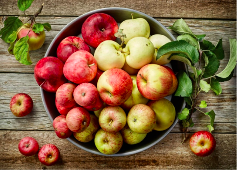
Extended workdays, possible home schooling, and other responsibilities may often lead to missing a meal or making a fast-food run. The U.S. Department of Agriculture’s MyPlate provides recipes, tips, and resources to guide you in creating a healthy eating plan. Start simple, download the MyPlate App, an easy-to-use app that will help guide you and track your progress.
Apples might be the essential fruit to have in a pinch. In fact, apples can be enjoyed during breakfast, lunch, or dinner or as a perfect on-the-go snack. When selecting apples, choose those that are firm, with intact stems, and they should smell fresh.
Wash your hands as recommended by the CDC, clean contact surfaces, and thoroughly rise apples to remove any dirt before you pack, enjoy, or use while preparing a meal. Refrigerate apples in a plastic bag, away from other fruits and raw meats for up to three weeks.
Not only are apples yummy, they are saturated fat free, low in fat cholesterol, and sodium free. Apples are rich in fiber and phytochemicals (compounds produced by plants).
Enjoy these tasty apple recipes!
Apple Cinnamon Yogurt Muffins (Kid Friendly)

Serving: 24
Nutritional Information: Calories: 217, protein: 3g, fat: 10g, carbohydrates: 29g, fiber: .6g, sodium: 230mg, cholesterol: 44mg
Ingredients
1 ¾ cups sugar
3 cups all-purpose flour
3 1/2 teaspoons baking powder
1/2 teaspoons salt
1/2 teaspoon grated orange zest
1/4 teaspoon ground nutmeg
1 cup (2 sticks) butter or margarine
1 cup grated Braeburn or Golden Delicious apple
1 container (8-ounce) low fat vanilla yogurt
2 large eggs, beaten
1 teaspoon ground cinnamon
Instructions:
1. Heat oven to 350° F. Grease 24 3-inch muffin pan cups or line with paper liners. In large bowl, combine flour, 1 cup sugar, the baking powder, salt, orange zest, and nutmeg. With pastry blender or fork, cut in 3/4 cup (1 1/2 sticks) butter until mixture is crumbly.
2. In medium bowl combine apple, yogurt, and eggs; add to flour mixture, stirring until just combined. Spoon batter into prepared muffin cups and bake 20 to 25 minutes or until centers spring back when gently pressed.
3. Cool muffins in pan 5 minutes; remove from pan and cool until able to handle. Meanwhile, melt remaining 1/2 stick butter. In small bowl, combine remaining 3/4 cup sugar and the cinnamon. To serve. brush tops of muffins with butter and roll top in cinnamon-sugar mixture.
4. Enjoy!
Golden Apple Oatmeal

Servings: 1
Nutritional Information: Calories: 122, protein: 4g, fat: 2g, carbohydrates: 27g, fiber: 3g, sodium: 331mg, cholesterol: 0mg
Ingredients
1/2 cup diced Golden Delicious apple
1/3 cup apple juice
1/3 cup water
1/8 teaspoon cinnamon
1/8 teaspoon nutmeg
1/8 teaspoon salt (optional)
1/3 cup quick cooking oats (of your choosing)
Instructions:
1. In small pot, combine apple, apple juice, water, cinnamon, nutmeg, and salt (if desired); heat to boiling. Stir in oats and cook 1 minute. Cover and let stand two minutes before serving.
2. Enjoy!

Paula Solano is a Master in Public Health student at Baylor University and certified Community Health Worker who is volunteering at the Texas A&M AgriLife Extension Service. A Waco native, she is passionate about serving her community, particularly underserved and underrepresented residents.
The Act Locally Waco blog publishes posts with a connection to these aspirations for Waco. If you are interested in writing for the Act Locally Waco Blog, please email [email protected] for more information.
